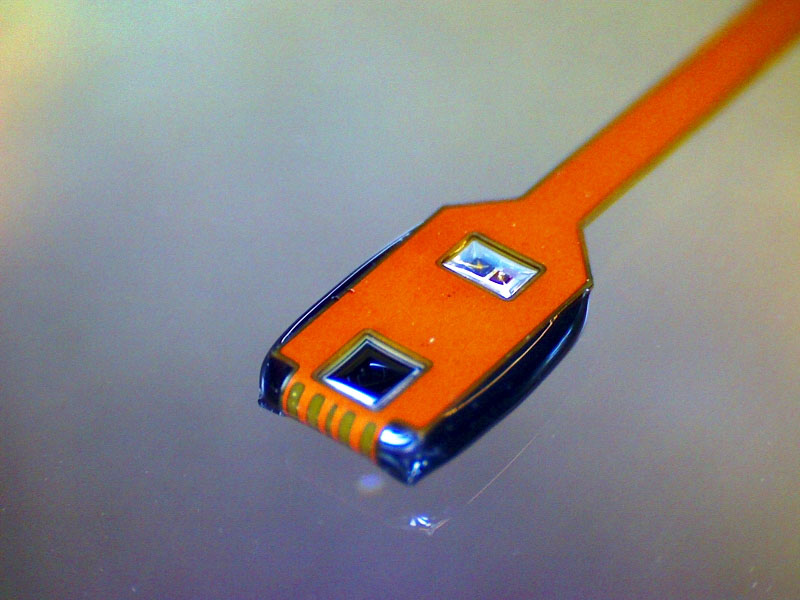The core component of the sensor is an integrated emitter-detector module with up to 4 light sources and a photodetector/array
Research and industry worldwide are working on so-called health wearables, mobile and barely visible systems that can record vital parameters with a high degree of comfort and under everyday conditions, analyse them and make them available to medical professionals for evaluation.
The continuous recording of so-called peripheral photoplethysmograms should provide further valuable information on human health in the future. In addition to pulse and arterial oxygen saturation, these include heart rate variability, respiratory rate as well as information on vascular stiffness and signs of rising or falling blood pressure.
Today, elevated blood pressure is the most important risk factor for cardiovascular diseases.
According to the German Hypertension League, about 35 million people in Germany suffer from this widespread disease. Often without symptoms, the disease is noticed too late. The consequences are strokes, heart disease, kidney failure, dementia, to name just the well-known ones.
Continuous tracking of this important vital parameter with the help of a long-term portable and patient-friendly sensor without using the universally known cuff was the aim of Erfurt scientists around project leader Dr. Hans-Georg Ortlepp, who also developed the patent for the sophisticated evaluation procedure. “The necessary raw data are taken from the shape of the pulse wave and its temporal behaviour. A high quality of the sensor signals and suitable mathematical algorithms in the data analysis are mandatory for medically relevant applications,” Ortlepp explains.
CiS Forschungsinstitut für Mikrosensorik GmbH has been developing miniaturised, silicon-integrated, multispectral photoplethysmography sensors for more than a decade and received the Innovation Award of the AMA Fachverband für Sensorik e.V. for this already in 2010.
The tiny sensors are placed in the external auditory canal and are individually adapted to the patient. A pleasant wearing comfort is enormously important for the high-tech components, as this is decisive for the user’s acceptance.
The sensor is technically equipped with up to 4 LEDs of different wavelengths in order to be able to additionally record measured values from different tissue depths and to detect and eliminate movement artefacts.
The CiS Research Institute achieved this success through a holistic development approach. This includes all technological steps from sensor design to in-house sensor production, but also the necessary system knowledge, especially for the optical simulation of the skin model and the electronic signal acquisition, its processing and optimisation.
The special technological features of the microsensor solution lie in the use of 3D-structured silicon wafers on which the photodetectors are already integrated. The number and wavelengths of the light sources are mounted with high precision as bare chips in the specified cavities of the silicon wafer according to exact specifications.
The research and development work was partially funded by the Federal Ministry of Economics and Technology (FKZ: VP2020410KJ2 and VF120024).




